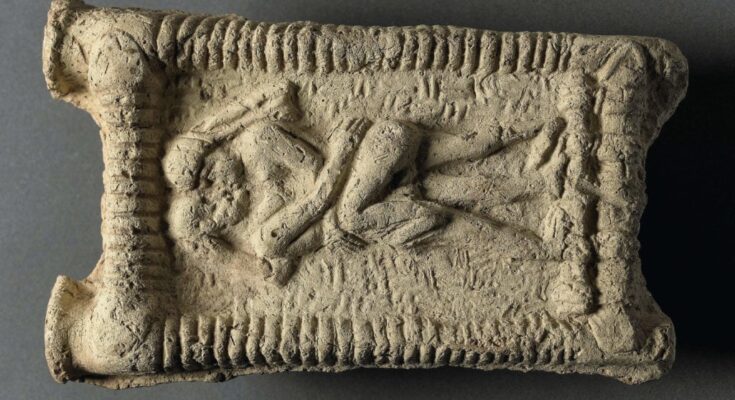
A new study suggests that kissing in humans began as a way of showing love, likely growing from grooming behaviors seen in ancient apes. Researchers believe that kissing evolved as a symbol of affection and connection across different societies and cultures.
In fact, evidence from last year’s research shows that kissing was common in ancient Mesopotamia around 4,500 years ago.
Early human civilizations in this area, between the Euphrates and Tigris rivers—now Iraq and Syria—left behind thousands of clay tablets. These tablets show that kissing was a part of romantic relationships back then.
Theories surrounding the evolution of kissing
The exact origins of kissing as a way to show affection remain uncertain, with experts offering different ideas. One theory suggests kissing may have started from early caregiving acts, like when caregivers pre-chewed food for infants.
Another theory proposes that kissing began as a way for people to sense health or compatibility in a potential partner.
In a recent study published in the journal Evolutionary Anthropology, scientists reviewed these ideas to better understand why humans developed this form of closeness. The research also examined similar behaviors in animals that may serve a similar purpose to human kissing.
Kissing in humans evolved as a symbolic expression of love from grooming behaviours seen in ancestral great apes, a comprehensive new study says.#news pic.twitter.com/qq5zN3oWgt
— Peer Community Hub, Your News Network Zone!
(@p_communityhub) October 31, 2024
Researchers observed that, in our ape ancestors, the last step in grooming often involved pressing the lips together and gently sucking to remove dirt or parasites. As humans evolved and lost much of their body hair, this grooming action no longer had the same purpose.
However, scientists believe this lip-pressing behavior, which they call the “groomer’s final kiss,” may have continued as a leftover action, or “vestigial behavior.” They note that this lip movement and suction in grooming resembles the way humans kiss today.
A unique human gesture or cultural misconception?
Scientists speculate that this behavior may have become common among early human ancestors as they spent more time on the ground rather than in trees.
This shift could have happened only after ancient climate changes transformed lush forests into drier, open landscapes, altering how early apes interacted with each other.
While kissing may seem like a natural greeting to many, it’s not universal across cultures. In fact, a 2015 study in American Anthropologist examined 168 cultures and found that only about 46% of them practiced romantic kissing.
Many indigenous hunter-gatherer communities don’t kiss at all and even view it as unpleasant. Western cultures often assume kissing is a common human behavior, but in many societies, kissing seems just as odd as sticking a finger in someone’s nose—an action more familiar to capuchin monkeys than humans.




